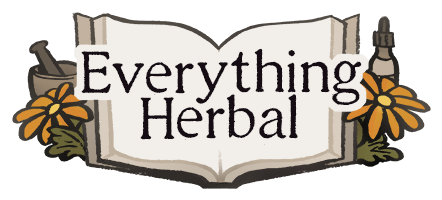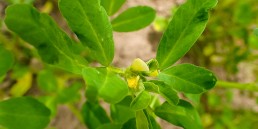July, 2021.
No matter your background, education, or practice, as a herbalist you are walking a path that was once walked by your ancestors. Our ancestral lineage includes our human ancestors, but also includes the community of plants, rocks, wind, water and soil that all took part in the creation of you. To be an herbalist – or simply, someone who connects with plants – you are participating in a spectacular woven tapestry that has been in creation since time immemorial.
Our deep relationship with Earth and the universe is our first and our last. Our relationship with the universe is the only relationship we ever truly participate in… Each interaction we have is simply a reflection of our own inner becoming; with our friends and relatives, as well as the plants and sky are all communicating as one. To be in relationship with the Earth and with plants, we are discovering again and again new layers of our own selves. In the journey of herbalism, there is a choice to venture deeply into one’s own mystery.
It is for this reason, and of course many others, that I pursued an apprenticeship. I wrote in my previous blog post that I split my time between two placements, and one of which is a plant sanctuary for at-risk plants called Kina Gegoo. For decades, Penelope Beaudrow has been stewardess to many acres of rewilding land, including a plant sanctuary for endangered plants. Penelope is one of my mentors and friends. The work that she has selflessly dedicated herself to is sacred.
To build a relationship, first we must listen. This first step is essential, especially in non-verbal conversation. The language of plants. The language of the universe. Most times, a conversation begins with an introduction, a check in, and a sharing of intention. Seems familiar, yes? Most at-risk plants become at risk due to habitat loss and overharvesting. Humans are most certainly a fault, with agendas that often hold space only to exploit land. If we take some time to listen, it won’t take long for the plant to tell you that. It is our responsibility to do whatever we can to maintain the life of these plants. We have a lot of power, and a lot of hope for regaining plant communities that are at risk of being lost.
“I didn’t participate in those atrocities” (devastating land for extraction of “natural “resources”, unsustainable agriculture practices, slavery, indigenous genocide… the list goes on and on.) Aha. This is a refrain used by many to weakly deflect their responsibility. I want to make this next thought very clear: there is a mirrored relationship of at-risk plants and racism, and how there is a clear and parallel path to addressing them. This comparison is by no means an equivalency – I am using endangered plants as a metaphor, and in doing so I hope to encourage you to explore the relationships that herbalism has with politics… but that’s for another blog post, perhaps. I’ll simply plant this seed of thought for now.
Let these plants be our teachers. Let them teach us what it takes to show up for our communities. Whether those communities are human or otherwise. We are creating safe spaces for one another to flourish, based on individual needs. We are listening, trying, failing, continually humbled, and continuing to show up at the table for one another. That is what community care looks like – and that’s exactly what it looks like when you are trying to care for at-risk plants. We are taking responsibility while holding ourselves accountable.
And what is our responsibility, then, when considering endangered plants? Knowing which ones are endangered, knowing how to identify them, choosing not to use them, growing a colony of your own, informing others who may not know. This is the very least we can do as herbalists and plant lovers, and it truly does a lot! On a large scale, you may wish to cultivate your own plant sanctuary. Some people have made it their life work to do so. I’ve been fortunate enough to see and participate in the stewardship of a plant sanctuary, at Kina Gegoo.

Toting buckets of water to ensure everyone has had a good drink. Hauling bales of straw for mulching. Checking in with each newly planted tree. Pruning. Collaborating. Breaking in the heat. Sitting in the grass and connecting about anything and everything that feels relevant… Or not. Planting and transplanting. Kneeling down to say hello. Keeping invasive plants at bay just enough so they don’t completely swallow the land. An exercise in boundaries. “You can stay, buckthorn, but you mustn’t take all of this land for yourself. You can stay, but you may not harm these other plants we are trying to cultivate. You can stay, because it’s clear that you wish to, but you will not have total control of this sacred mission.”
There is extensive and inspiring work being done by the United Plant Savers. If you are a plant person, which I am assuming you may be if you’ve found your way to this page, I greatly encourage visiting their website and taking a look at their resources at https://unitedplantsavers.org
I’d like to take this next moment to ask you… What are you doing for your community this month?
Sometimes community work doesn’t look like direct action. Sometimes taking care of yourself is necessary, so you can show up in a better way for your community. Perhaps you are journaling, opening your heart, learning something new, easing your resistance to new things, or putting your hands in the dirt and enjoying the beauty of July sunshine.
Whatever it is that you are doing… thank you. May it benefit all beings.
(Blog photo provided by Penelope!)
Subscribe to Blog via Email



